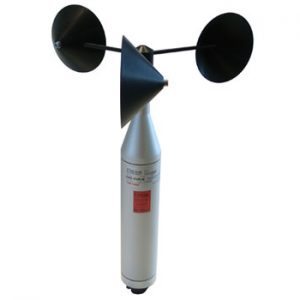The amount of electricity a Wind turbine can generate depends on the local wind speed therefore it is crucial to measure the wind speed before installing a turbine to make sure it will be financially worthwhile. it is not recommended installing a domestic small scale wind turbine in areas with wind speeds of less than 5 metres per second (5m/s) as speeds less than this are unlikely to provide a cost-effective way of producing electricity with current technologies. If the project looks viable the second step is to check the wind speed predictions using an anemometer or wind gauge. You should do this for at least three months and ideally for twelve months or more.
The purpose of the anemometer is to measure average, minimum and maximum wind speed as well as how much turbulence there is at the site. When two anemometers are installed at different heights on the same mast, this provides useful additional information about the wind shear and the difference in wind speed at different heights and can also provide useful information about the intensity of any wind turbulence at the site.
The ideal scenario is to have anemometers sited at the same site and height as the hub of the proposed wind turbine, so you can leave it in situ while the wind speed is being monitored.
EASYMEASURES provide sensors and professional data loggers that not only measure wind speeds but also issued a real-time calculations of data over regular intervals, usually set at 10 minutes. These calculations include the average and maximum wind speeds over the interval selected.
EASYMEASURES provide any tools for the wind measurement as Ultrasonic Anemometers, including compass rather than Cups Anemometers and other sensors measuring Barometric Pressure, Temperature & Humidity.



